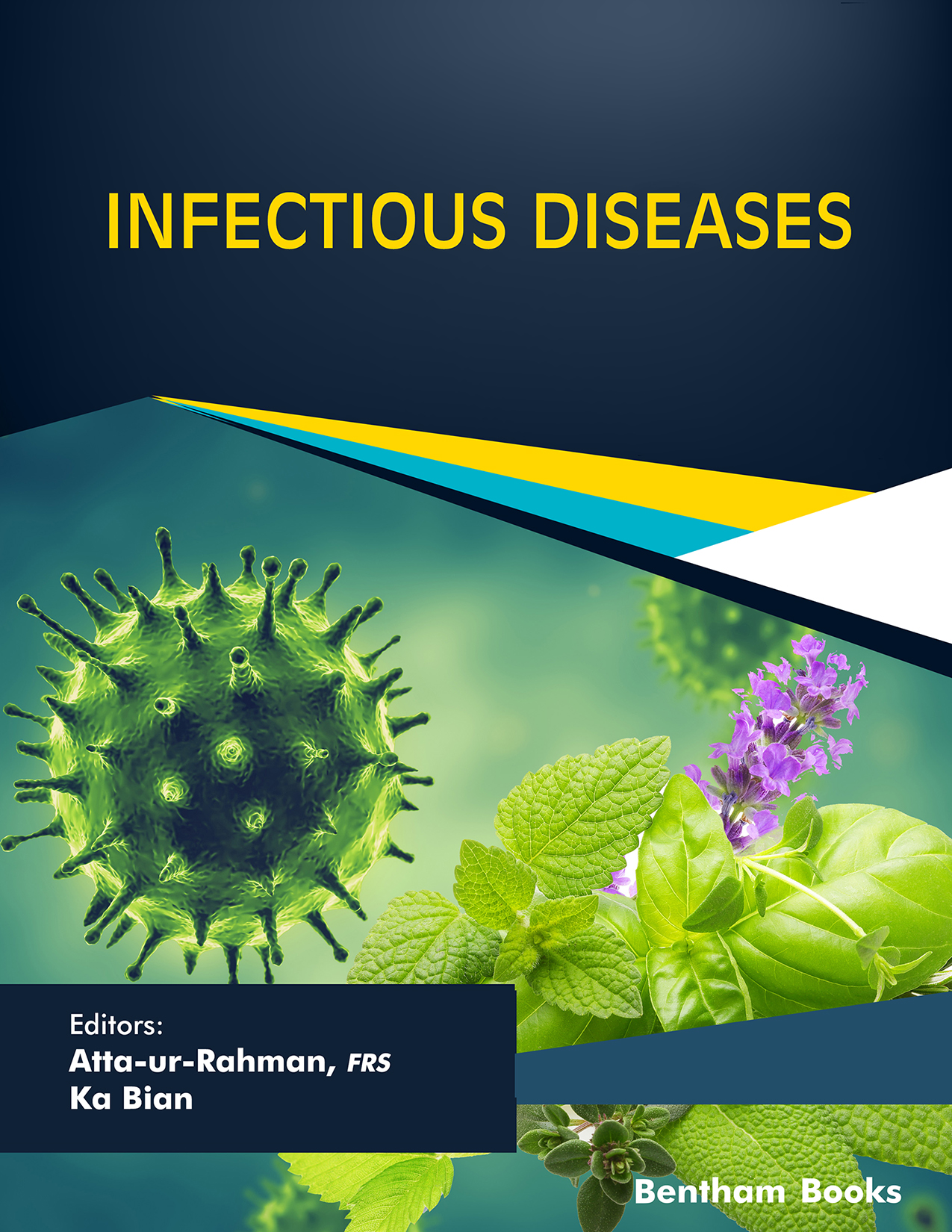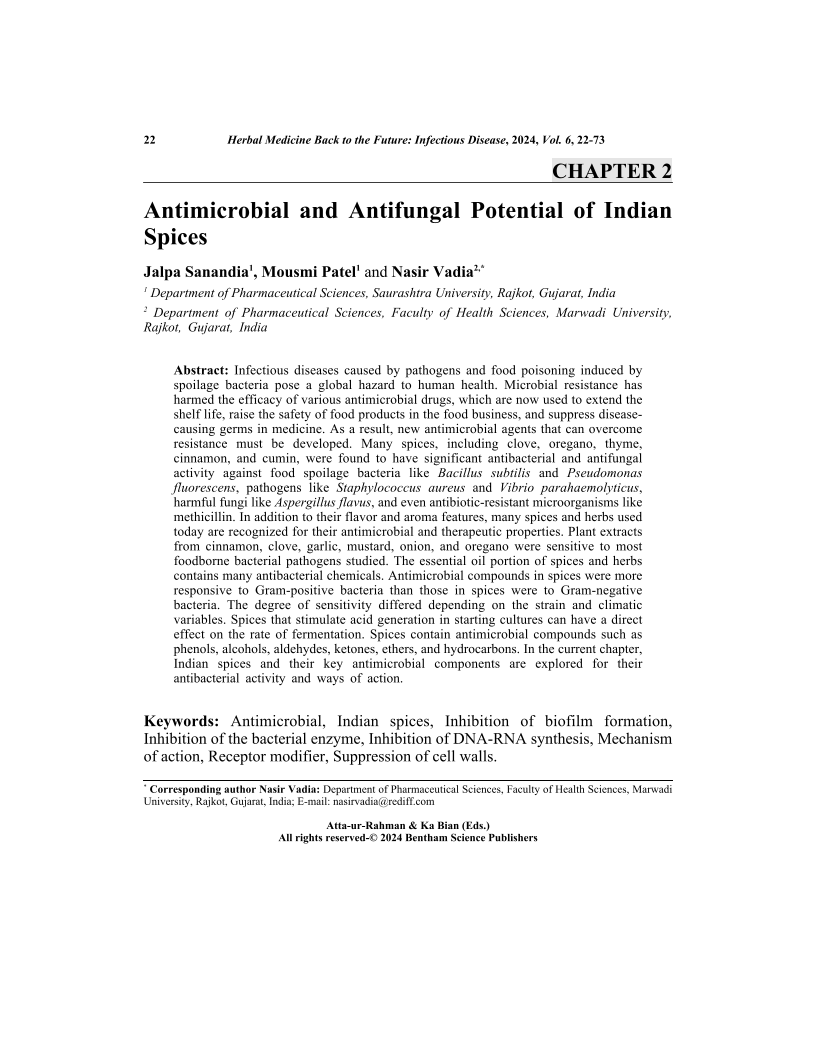Antimicrobial and Antifungal Potential of Indian Spices

- Authors: Jalpa Sanandia1, Mousmi Patel2, Nasir Vadia3
-
View Affiliations Hide Affiliations1 Department of Pharmaceutical Sciences, Saurashtra University, Rajkot, Gujarat, India 2 Department of Pharmaceutical Sciences, Saurashtra University, Rajkot, Gujarat, India 3 Department of Pharmaceutical Sciences, Faculty of Health Sciences, Marwadi University, Rajkot, Gujarat, India
- Source: Infectious Diseases , pp 22-73
- Publication Date: August 2024
- Language: English
Antimicrobial and Antifungal Potential of Indian Spices, Page 1 of 1
< Previous page | Next page > /docserver/preview/fulltext/9789815256321/chapter-2-1.gif
Infectious diseases caused by pathogens and food poisoning induced by spoilage bacteria pose a global hazard to human health. Microbial resistance has harmed the efficacy of various antimicrobial drugs, which are now used to extend the shelf life, raise the safety of food products in the food business, and suppress diseasecausing germs in medicine. As a result, new antimicrobial agents that can overcome resistance must be developed. Many spices, including clove, oregano, thyme, cinnamon, and cumin, were found to have significant antibacterial and antifungal activity against food spoilage bacteria like Bacillus subtilis and Pseudomonas fluorescens, pathogens like Staphylococcus aureus and Vibrio parahaemolyticus, harmful fungi like Aspergillus flavus, and even antibiotic-resistant microorganisms like methicillin. In addition to their flavor and aroma features, many spices and herbs used today are recognized for their antimicrobial and therapeutic properties. Plant extracts from cinnamon, clove, garlic, mustard, onion, and oregano were sensitive to most foodborne bacterial pathogens studied. The essential oil portion of spices and herbs contains many antibacterial chemicals. Antimicrobial compounds in spices were more responsive to Gram-positive bacteria than those in spices were to Gram-negative bacteria. The degree of sensitivity differed depending on the strain and climatic variables. Spices that stimulate acid generation in starting cultures can have a direct effect on the rate of fermentation. Spices contain antimicrobial compounds such as phenols, alcohols, aldehydes, ketones, ethers, and hydrocarbons. In the current chapter, Indian spices and their key antimicrobial components are explored for their antibacterial activity and ways of action.
-
From This Site
/content/books/9789815256321.chapter-2dcterms_subject,pub_keyword-contentType:Journal -contentType:Figure -contentType:Table -contentType:SupplementaryData105

